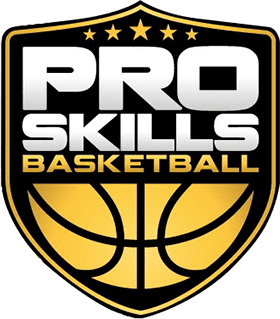
AAU basketball shoe circuits have become a major piece of grassroots high school basketball, serving as pathways for the country’s top amateur talent to gain exposure, compete at high levels, and attract the attention of college coaches and scouts.
Understanding these circuits can be key for aspiring players, parents, and coaches navigating youth basketball.
What is an AAU Basketball Shoe Circuit?
An AAU basketball shoe circuit is a series of tournaments that form a league or circuit sponsored primarily by major athletic brands.
These circuits attract elite high school talent from around the country, offering opportunities to showcase skills, compete at national events, and gain significant media and recruiting attention.
One major attraction of the primary shoe circuits (EYBL, 3SSB, UAA, Pro16, and NXT) is that teams receive free apparel, shoes, and gear, often reducing costs for players and families.
This contrasts with secondary shoe circuit teams, which is more of a “pay to play” model and must purchase gear packages from their respective brands.

The Major AAU Basketball Shoe Circuits
Here’s a breakdown of the top AAU basketball shoe circuits, along with their secondary, developmental circuits:
Nike EYBL (Elite Youth Basketball League)
- Top Circuit: EYBL
- Secondary Circuit: EYCL (Elite Youth Champions League)
- Highlights: Considered the most prestigious AAU shoe circuit, featuring the nation’s highest-ranked talent. The Nike Peach Jam is its standout event, drawing massive attention from scouts, media, and high-level college programs.
Adidas 3SSB (3 Stripes Select Basketball)
- Top Circuit: 3SSB
- Secondary Circuit: Adidas Gold Gauntlet
- Highlights: A strong competitor to Nike’s EYBL, Adidas 3SSB features top talent with significant national exposure. Their championships are widely covered, and numerous NBA stars have come through this circuit.
Under Armour UAA (Under Armour Association)
- Top Circuit: UAA
- Secondary Circuit: UA Rise
- Highlights: Rapidly growing in stature, the UAA circuit provides competitive events nationwide. It’s particularly known for strong player development and exposure to mid-major and high-major college programs.
PUMA Pro16
- Top Circuit: Pro16
- Secondary Circuit: PUMA NXTPRO
- Highlights: A newer but rapidly growing circuit aiming to compete with the established big three. It offers strong opportunities and increasing exposure for up-and-coming talent.
New Balance P32 League
- Top Circuit: P32
- Secondary Circuit: None (currently)
- Highlights: The latest major brand to enter AAU basketball, New Balance P32 has quickly carved out a competitive niche, especially in the Northeast and West Coast.

Understanding Secondary Shoe Circuits
Secondary shoe circuits (EYCL, Adidas Gold Gauntlet, UA Rise, and PUMA NEXTPRO) serve multiple purposes beyond player development and exposure.
They significantly subsidize the cost of primary shoe circuits by requiring teams to pay circuit entry fees and purchase branded apparel packages. Unlike primary circuits, secondary circuit events typically do not cover team apparel costs.
Additionally, secondary circuit games are often played at venues separate from the primary circuit sites, sometimes quite far away. Consequently, these secondary circuit games may not receive as much attention from college coaches, scouts, and media, potentially limiting exposure compared to primary circuit events.
While secondary shoe circuits still provide competitive play and meaningful exposure, it’s important for players and families to clearly understand their primary purpose: subsidizing the financial costs of operating elite primary circuits.
Non-Shoe Independent Circuits
Beyond the shoe circuits, independent circuits offer additional exposure and competitive platforms. Some notable examples include:
- Hoop Group: Prominent East Coast exposure events.
- NY2LA Sports: Strong Midwest-based showcase tournaments.
- Prep Hoops Circuit: Nationwide exposure circuit for emerging talent.
- Zero Gravity: Extensive circuit across the East Coast.
- Big Shots: Popular events, especially in the Southeast and East Coast regions.
- Premier Basketball: Notable events primarily in Texas and the Southwest.
- Made Hoops: Known for premier middle school but making strong push into high-school-age tournaments.
- On the Radar Hoops: Strong events in the Southeast.
Choosing the Right Circuit
Selecting the right AAU basketball shoe circuit or independent circuit depends on:
- Skill Level: Elite players typically compete on primary shoe circuits (EYBL, 3SSB, UAA).
- Recruitment Goals: High-major Division I aspirations align well with primary circuits, while mid-major, Division II, or Division III goals align with secondary or independent circuits.
- Exposure Needs: Players should consider the visibility and attendance of college coaches and scouts at each circuit.
However, it’s crucial to recognize that primary shoe circuits are highly selective. Players do not typically choose to play on these circuits; rather, teams select their athletes, targeting only the most elite players with potential NBA-level talent.
Shoe companies invest heavily in these circuits to form early relationships with potential future professional athletes. Thus, even if a player desires to play on a primary circuit or aims for Division I, it’s not guaranteed they will have that opportunity.
Most players, therefore, will compete on secondary or independent circuits, which still provide valuable competitive experiences and exposure opportunities.
Final Thoughts
While playing on a shoe circuit can offer substantial exposure and competitive benefits, it isn’t necessarily the best fit for every player.
Many athletes will benefit more from competing on independent or secondary circuits, where they may receive better coaching, more playing time, and more targeted exposure suited to their specific recruitment goals.
Families and players should carefully evaluate their options, recognizing that shoe circuits, despite their appeal, may not always align with their development needs and long-term objectives.
The independent circuits offer strong competitive environments and valuable opportunities that should not be overlooked.

 Unlocking Leadership Opportunities in Youth Sports: Become a Pro Skills Basketball City Director
Unlocking Leadership Opportunities in Youth Sports: Become a Pro Skills Basketball City Director »
»